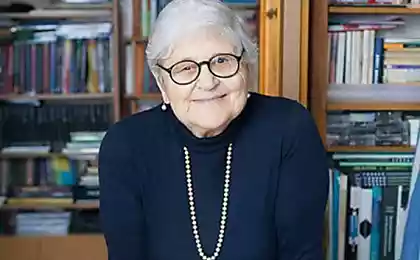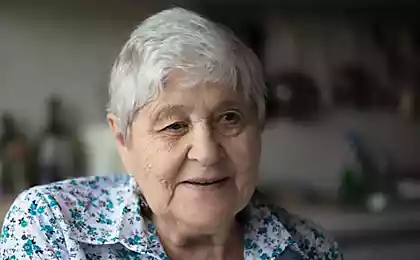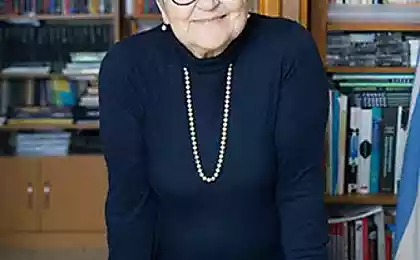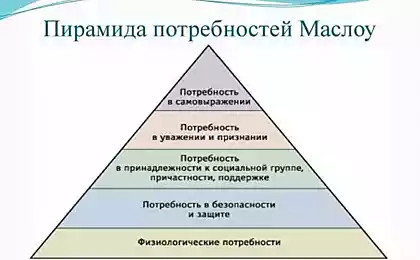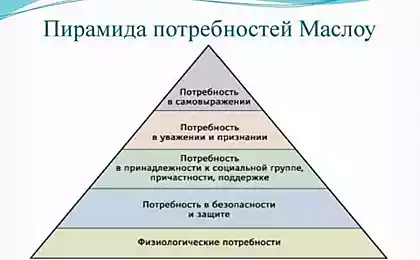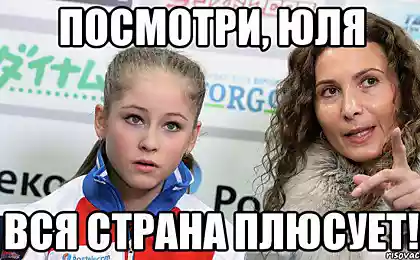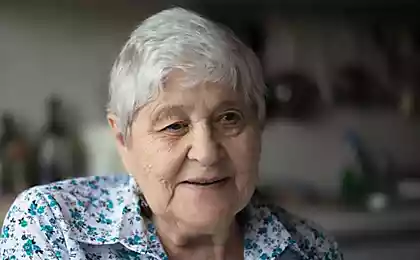811
Julia simultaneously: the Unconscious processes
All unconscious processes can be divided into three great classes:
(1) unconscious mechanisms of conscious actions;
(2) unconscious driving force of conscious action;
(3) "nadcisnienie" processes.
In the first class – unconscious mechanisms of conscious actions – are, in turn, three different subclasses:
a) unconscious automatism;
b) the phenomenon of unconscious installation;
C) the unconscious maintenance conscious action.
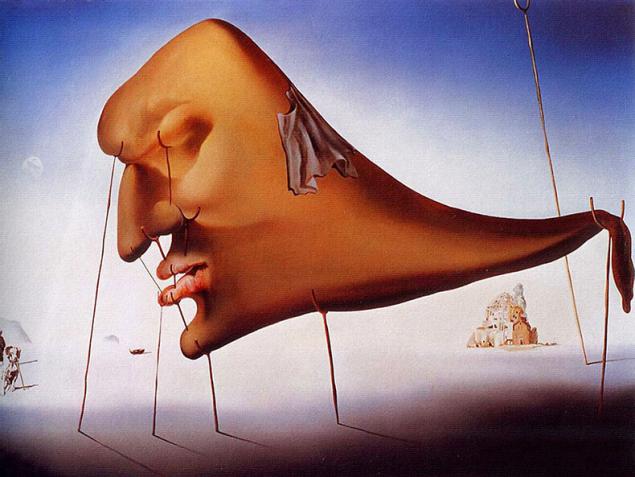
Let's consider each of these subclasses.
Under unconscious automatism mean are usually actions or acts that are committed "by themselves", without consciousness. Sometimes talking about the "mechanical work", the work in which "the head is left free." "Free head" and means the absence of conscious control.
Analysis of the automatic processes that detect their double origin. Some of these processes are never realized, others passed through the mind and no longer be recognized.
First make a group of primary automatisms, and the second group of secondary automatism. The first is called otherwise automatic action, the second automated actions, or skills.
In the group of automatic actions include either congenital acts, or those that are formed very early, often within the first year of a child's life. Examples: sucking movements, blinking, grasping objects, walking, convergence of the eyes, and many others.
Group of automated actions, or skills, especially extensive and interesting. Due to the formation of a skill is achieved a twofold effect: first, the action starts to be carried out quickly and accurately; second, as already mentioned, there is a release of consciousness that can be directed to the development of more complex actions. This process is fundamental to the life of every individual. Do not be an exaggeration to say that it underlies the development of all our skills, knowledge and abilities.
Let's consider an example. Take learning to play the piano. If you have gone through this process or watched it happen, then you know that it all starts with the development of elementary acts. First you need to learn to sit correctly, put in correct position of legs, arms, fingers on the keyboard.
Then practiced separately strikes each finger, the rise and fall of a brush, etc. On this most elementary basis elements are built proper piano technique: a beginner pianist learns to "conduct" a melody, to take the chords, playing staccato and Legato... And this is just the basis which is necessary in order to sooner or later go on to expressive playing, i.e. to the problems of artistic performance.

Thus, by advancing from simple actions to complex, thanks to the transfer on the unconscious levels of action already mastered, a person acquires skill. And in the end, great pianists reach this level, when, according to Heine, "the piano disappears, and we discover one music".
Why performed by master pianists remains "one music"? Because they mastered piano skills.
Speaking about the release of the action of conscious control, of course, do not think that this release completely, i.e. that the person doesn't know what he's doing. This is not so. Control, of course, remains, but it is as interesting.
The field of consciousness, as you already know, is not uniform: it has the focus, the periphery and, finally, the boundary beyond which begins the region of the unconscious. And this mixed picture of consciousness as if overlaid on a hierarchical system of complex actions. With the high floor system is the most recent and most complex components of the action – is in focus of consciousness; the floors fall on the periphery of consciousness; finally, the cheapest and the exhaust components beyond the border of consciousness.
I must say that the attitude of the various components of the action to the consciousness is unstable. In the field of consciousness is a constant change of content: presented in it is one or the other "layer" of the hierarchical system of acts constituting the action.
Movement in one direction, repeat is caring a learned component from the focus of consciousness to the periphery and from the periphery of its boundary, in the region of the unconscious. Movement in the opposite direction means the return of some of the components of the skill in consciousness. Usually it happens in case of difficulties or errors, fatigue, emotional stress. This return to consciousness may be the result of arbitrary intentions. Property of any of the component skill to once again become conscious is very important because it provides the flexibility of skill, the possibility of additional improvement or alteration.
Incidentally, this property skills differ from automatic actions. Primary automatisms is not sufficiently understood and not amenable to realization. Moreover, attempts to realize them usually upsets the action.
This last fact is reflected in the well-known parable of the centipede. The centipede asked, "How do you know which of your forty foot need now to make a move?". Centipede thought and are unable to move seats!
<...> Ask yourself whether there are automatic processes in the mental sphere? Of course. There are so many that even hard to choose some simple example.
Best of all, perhaps, to turn to mathematics. It was there for us the most obvious process of sequential layering of increasingly complex actions, skills or knowledge for automated the previous layers. The basic actions at the unconscious level is accompanied by a snapshot of "discretion" that initially demanded the expanded thinking process.
Consider the following algebraic example:

What is this expression? In short, the answer is the unit. So? So. Now let's see what the decision was based. It was based on a direct "vision" of what, for example, in the numerator there is an incomplete square of the sum and difference of squares and the denominator is the difference of cubes; on the knowledge of their decomposition; instant-use rules reduce the same factors in the numerator and denominator; to the knowledge of what 1 is and 12 and 13, etc. All these "visions", "rules", "knowledge" – the automated mental action, the path which consisted of many steps we have done since learning in the first grade.
This concludes the introduction with the first subclass of the unconscious mechanisms and move on to the second – phenomena of unconscious installation.
The concept of "installation" took in psychology a very important place, probably because of the phenomenon of installation permeate almost all spheres of human mental life.
In Soviet psychology there is a whole in the direction of the Georgian school of psychology that develops problem setup in a very large scale. Georgian psychologists are direct disciples and followers of the outstanding Soviet psychologist D. N. Uznadze (1886 – 1950), who created the theory of the installation and organized the forces of a large team.
The theory proper installation I with you will not disassemble: this is a large and complex topic. Limited acquaintance with the phenomena of unconscious installation.
First of all, what is installation. By definition, it's the willingness of an organism or entity to commit some action or response in a certain direction.
Notice that we are talking about readiness for the upcoming action. If the skill relates to the implementation period of the action, the setting to the period before the results.
Facts which can demonstrate the readiness, or pre-adjustment of an organism to action, extremely a lot and they are very diverse. As I said, they belong to different spheres of the psychic life of the individual.
For example, a child before one year of age, trying to take the subject, adjusting the hand under its form: if it's a small thing, it brings together and extends the fingers, if it is a round object, he rounds up and separates the fingers, etc. Such adjustment of the posture of the hands illustrate the engine installation.
A Sprinter is ready to leap is too motor installation.
If you sit in a dark room and wait in fear of something threatening, sometimes really start to hear footsteps or suspicious noises. The proverb "fear has big eyes" reflects the phenomenon of perceptual installation.
When you are given any math, expressed in trigonometrical symbols, then you have created a setting to solve it with formulas of trigonometry, although sometimes this decision boils down to a simple algebraic transformation. This is an example of a mental setup.
The state of preparedness, or set up, has a very important functional role. The subject is prepared for a specific action, has the ability to implement it quickly and accurately, i.e. more efficiently.
But sometimes the mechanisms of the installation enter a person into the confusion (example of unfounded fear). Let me give you another example, this time borrowing it from the Chinese ancient literary monument.
"Lost one axe. He thought of the son of his neighbor and began to watch him closely: walks like a stolen ax, looks like a stolen axe, he says, as the stolen axe. Word, every gesture, every move give him as a thief.
But soon the man began to dig up the soil in the valley, and found his ax. The next day looked at the son of a neighbor: neither gesture nor movement doesn't look like a thief" (Atheists, materialists, dialectics of ancient China. M., 1967, p.271).
It "installation errors" that appear in erroneous actions, perceptions or evaluations are among the most expressive of its manifestations , and early attracted the attention of psychologists.
I must say that not every setting neosoznanna. You deliberately wait for the last – and indeed to see the terrible, it is possible consciously to suspect a person of stealing an axe – and really see that he goes, "how stole the axe." But the most interesting are the manifestations of what unconscious installation. They began experimental and theoretical studies at school D. N. Uznadze (Uznadze D. N. Psychological research. M., 1966) .
The main experiments, which was the starting point for the further development of the concept of D. N. Uznadze, were as follows. The subject is given into the hands of two balls of different size and were asked to rate which hand the ball is bigger. The larger the ball, suppose, was given in the left hand, less in the right.
The subject correctly estimated the volumes of balls, and the trial repeated again in his left hand gave a larger ball, and the right is smaller and the subject is again correctly estimated the volumes. Again repeated the test, and so fifteen times in a row (Repetition samples served the purpose of strengthening, or fixing, setting, respectively, the described experiments are called experiments with a fixed setting).
Finally, in the next, the sixteenth, the sample suddenly, the subject was given two of the same ball with the same instruction: "compare their volumes." And now it turns out that the subject in this last control sample was evaluated wrongly balls: he took it again as a different volume.
Fixed up install that in your left hand will be given more of the ball, determined, or directed, perceptual process: the subjects generally said that the left hand ball less. However, sometimes the answers were the same as in the installation samples, i.e., that the left hand ball more. Errors of the first type was called contrast illusions installation errors of the second type – assimilative illusions install.
D. N. Uznadze and his staff have studied in detail the conditions of occurrence of illusions of each type, but I'm not on them now to stop. The important thing is to make sure that the installation in this case was really unconscious.
Directly it's not obvious. Moreover, we can assume that in the preparatory trial, the subjects were quite aware that the same type follow the presentation, and began deliberately to wait for the same samples once again.
The assumption is absolutely true, and in order to test it, D. N. Uznadze conducting a control experiment with hypnosis.
Subject euthanized in the state of hypnosis conduct pre-installation tests. The subject then awakens, but before he is led to believe that he'll remember nothing. After awakening, he is given only one test, test. And here it turns out that it the subject gives the wrong answer, although he does not know that before him many times was presented with balls of different sizes. Install he formed and now manifested the typical way.
So, the described experiments it was proved that the formation and operation of a facility study type not recognized.
D. N. Uznadze, and after him his followers, gave fundamental importance to these results. They saw in the phenomena of unconscious installation, the evidence of the existence of a special, "dosnateli", forms of the psyche. According to them, this is an early (in genetic and functional terms) the stage of development of any conscious process.
<...> There are multiple ways to refer to one or another theoretical interpretation of the phenomena of unconscious installation, but an absolute fact is that these phenomena, as discussed above, the automatism, reveal the multilayered nature of mental processes.
Moving to the third subclass of unconscious mechanisms, unconscious accompaniment of conscious actions.
Not all unconscious components of actions have the same functional load. Some of them sell for conscious actions – and they are relegated to the first division; prepare other actions – these are described in the second subclass.
Finally, there are the unconscious processes that simply accompany the action, and they allocated us to the third subclass. These processes a large number, and they are extremely interesting for psychology. I will give examples.
You probably had to watch as the man wielding the scissors, moves the jaws to the rhythm of these movements. What is this movement? Is it possible to attribute them to motor skills? No, because movement of the jaws do not implement the action; they also did not prepare it, they only accompany it.
Another example. When the player pool and let a ball by the pocket, he often tries to "straighten" his movement is quite useless movements of hands, body or the cue.
Students in the exams are often very much hold the pen or break the pencil when asked, for example, draw a chart, especially if they are in this graph is not very sure.
A man who looks at another who cut, for example, finger, building a sorrowful grimace, empathizing with him, and absolutely does not notice.
So, in the process group of the third subclass includes involuntary movement, tonic tension, facial expressions and pantomime, as well as a large class of vegetative reactions accompanying actions and the human condition.
Many of these processes, especially the autonomic components are a classical object of physiology. However, as I said, they are extremely important for psychology. The importance of this is determined by two circumstances.
First, we discuss the processes included in the communication between people and provide a crucial additional (along with speech) means of communication.
Secondly, they can be used as objective measures of various psychological characteristics of man – his intentions, attitudes, hidden desires, thoughts, etc. It is based on these processes in experimental psychology is intensively developing the so-called objective indicators (or physiological correlates) mental processes and States.
To illustrate both points, again give examples.
The first example is expanded to illustrate how it is possible inadvertently and neosoznanno to transmit information to another person.
We will focus on the "mysterious" phenomenon of "mind reading" through the muscular sense. You've probably heard about sessions that give some individuals the stage. The essence of their art is truly unique ability to perceive from another person's so-called ideomotor acts, i.e. the finest muscle strain and micromotion that accompany increased predstavljanje some action.
Unconscious driving force of conscious action. <...> Thus, according to Freud, the psyche is wider than consciousness. Hidden knowledge – it is also mental formations, but they are unconscious. For their awareness, however, you only need to strengthen the traces of past experiences.
Freud considers it possible to place these contents in the area immediately adjacent to the consciousness (preconscious), because they can be easily translated to consciousness.
As for the unconscious, it has quite different properties.
First of all, the content of this field is not understood, not because they are weak, as in the case of latent knowledge. No, they are strong, and their force is manifested in the fact that they influence our actions and condition. So the first distinguishing feature of unconscious representations is their effectiveness. The second feature is that they easily pass into consciousness. This is explained by two mechanisms that Freud postulates, mechanisms of repression and resistance.
According to Freud, mental life of man is determined by his inclinations, the most important of which is the sex drive (libido). It exists already in the infant, although in childhood it passes through a series of stages and forms. Because of the many social taboos, sexual experiences and related representations are displaced from consciousness and live in the unconscious. They have a large energy charge, however, consciousness is not ignored: the consciousness oppose them. However, they erupt into the conscious life of the person taking a distorted or symbolic form.
Freud identified three main forms of manifestations of the unconscious: dreams, faulty actions (forgetting things, intentions, names; clerical, reservations, etc.) and neurotic symptoms.
Neurotic symptoms were the manifestations, which started work Freud. Here is one example from his practice.
A young girl fell ill with severe neurosis after going to bed dead sister, and for a moment thought about my brother-in-law (husband's sister): "Now he is free and able to marry me". This thought was immediately pushed it as absolutely inappropriate in the circumstances, and, ill, the girl had completely forgotten the whole scene at the bedside of a sister. However, during treatment it is with great difficulty and excitement I remembered it, and then came recovery.
According to the ideas of Freud, neurotic symptoms are the traces of repressed traumatic experiences which form in the unconscious highly charged hearth and from there produce destructive work. A center should be opened and drained – and then the neurosis will lose your reason.
Please refer to the instances of the unconscious causes of action in everyday life, which in the early period of his scientific activity in a large number of collected and described by Freud (Freud. Psychopathology of everyday life // anthology of General psychology. The psychology of memory. M. 1978).
Not always (and you will see) the basis of symptoms lies a repressed sexual desire. In everyday life there are many unpleasant experiences that are not related to the sexual sphere, and, nevertheless, they are suppressed or superseded by the subject. They also constitute the affective foci that "break" in erroneous actions.
Here are some cases from observations of Z. Freud.
The first refers to the analysis of the "failure" of his own memory. Freud once argued with a friend about how much both of them are well known Villa area restaurants: two or three? A friend claimed that three, and Freud – two. He called these two, and insisted that there is no third. However, this third restaurant was still. He had the same name as the name of one of Freud's colleagues with whom he was at loggerheads.
Another example. One friend Freud passed the exam in philosophy (such as minimum candidate). He got a question about the doctrine of Epicurus. The examiner asked if he knows the later followers of Epicurus, to which mark replied: "why, Pierre Gassendi". He called this name because two days ago I heard in a cafe talking about Gassendi as a disciple of Epicurus, although he his work did not read. Satisfied the examiner asked how he knows that name, and a friend lied, and explained that specially interested in the works of this philosopher.
After this case, the name of P. Gassendi, in the words of a friend of Freud, was constantly dropped out of his memory: "apparently, the reason for my conscience, – he said – and I should know that name, and now it is constantly forgotten" (Freud. Psychopathology of everyday life // anthology of General psychology. The psychology of memory. M. 1978. p.112).
The following example applies to reservations. Freud thought that the reservations do not arise by chance: they break true (hidden) intentions and experiences of the person.
Once the Chairman of the meeting, which according to some personal reasons didn't want the meeting took place, opening it, said: "let's consider our meeting to be closed".
Here is an example erroneous actions. When Freud was a young practitioner and I went to the sick at home (and not they to him), he noticed that the front doors of some apartments, and he, instead of call, got your own key. After analyzing their experiences, he found that this happened at the door of those patients where he felt "at home" (Z. Freud. Psychopathology of everyday life // anthology of General psychology. The psychology of memory. M. 1978. p.147).
In psychoanalysis has developed a number of methods for the identification of unconscious affective complexes. Chief among them is the method of free Association technique and dream analysis. Both methods assume the active work of the psychoanalyst, namely, the interpretation of the continuously produced by the patient layers (the method of free Association) or dreams.
With the same objective used was already partially familiar associative experiment. Will tell about this method in more detail, as it is most simple.
You already know that the associative experiment the subject or patient offer to answer quickly any came to mind at the word made words. And here it turns out that after a few dozen samples to the subject's answers are beginning to emerge concerning its hidden emotions.
If you read the story of K. Capek, "the Experiment of Dr. Rous", we could get an idea of how it all happens.
Will give you a brief summary of the story. In the Czech town comes an American Professor, a psychologist, a Czech by origin. Announced that it will demonstrate their professional skills. Going public – know of the city, journalists and others. Enter the criminal who is suspected of murder. The Professor dictates his words, offering to answer that first came to mind with the word. First, the offender does not want to deal with him. But then the game "in the word" fascinated him, and he retracts. The Professor gives a first, neutral words: beer, street, dog. But gradually he begins to include words that are related to the circumstances of the crime. It is proposed the word "café", the answer is "highway", is given the word "spots", the answer is "bag" (later it was found that blood stains were wiped out by the bag); the word "hide" – the answer "bury", "shovel" – "Yama", "Yama" – "fence", etc.
In short, after a session on the recommendation of the Professor, the police go to some place near the fence, dig a hole and find hidden corpse (K. Capek Stories. M., 1981).
We have no opportunity to parse further the theory and technique of psychoanalysis, as well as his criticism. All of this requires a special course of lectures. My goal was only to introduce you to the main contribution of Freud – the discovery of the sphere of the unconscious dynamic and the description of forms of its manifestation.
Refer to the third class of unconscious processes that I conditionally designated as "nadcisnienie" processes. If you try to briefly describe them, we can say that the processes of formation of a large integrated product of conscious work, which is then "invades" in the conscious life of man and, as a rule, radically changing its course.
To understand what was going on, imagine that you are preoccupied with, which I think from day to day for a long time, amounting to weeks or even for months or years. It is a vital issue. You think on some issue, or about some person or some event that did not understand until the end and that you are somehow very touched, provoked painful reflection, hesitation or doubt.
Thinking over your problem, you sort out and analyze the different experiences and events, expressing assumptions, check them, argue with himself and with others. And then one day it all becomes clear – as if a veil falls from your eyes. Sometimes it happens unexpectedly, as if by itself, sometimes the reason turns out to be another ordinary impression, but that impression as the last drop of water that broke the camel's back.
You suddenly gain a whole new perspective on the subject, and this is not an ordinary opinion, is not one of those options which you went through earlier. It is qualitatively new; he remains in you and sometimes leads to the important turning point in your life.
Thus, what came to your mind, is really an integral product of the preceding process. However, you do not have a clear idea about the past. You only knew that what I was thinking and what was going on in any given moment or in a short period of time. The whole big process, which by all indications was in you, you are not traced.
Why similar processes should be placed outside of consciousness? Because they differ from conscious processes, at least in two important respects.
First, the subject does not know that the ultimate outcome, which will result in "nagsasariling" process. Conscious processes involve the target of the action, i.e. a clear awareness of the result, which the subject attempts. Second, unknown time when the "nagsasariling" the process is over; often it ends suddenly, unexpectedly for the subject. Conscious actions, on the contrary, assume control over the approach to the target and a rough estimate of the time when it will be achieved.
According to the phenomenological descriptions, to discuss the class of "superconscious" processes include the processes of creative thinking, the process experiences great grief or major life events, crises, feelings, personal crises, etc.
One of the first psychologists who drew special attention to these processes were V. James. He collected this account a lot of vivid descriptions that are outlined in his book "the varieties of religious experience" (W. James. The varieties of religious experience. M., 1910). As the later works on this subject (in Russian) can be called a small article of Z. Freud (Freud. Sadness and melancholy // Psychology of emotions. Texts. M., 1984), E. Lindeman (Lindeman E. Clinic of acute grief // Psychology of emotions. Texts. M., 1984), a relatively recently published book by F. E. Vasilyuk (Vasilyuk F. E. Psychology experiences. M., 1984).
Lead two major examples that deal W. James. The first example borrows from James L. N. Tolstoy. "I told S., – writes L. N. Thick, smart and honest man, he has ceased to believe. Years the 26, once on the bed during the hunt, by old, childhood adopted the habit, got up in the evening for prayer. His older brother, who accompanied him on the trip, was lying in the manger and looked at him. When S. had finished and was getting ready to lie down, his brother said to him: "And you're still doing it?" And more they said nothing to each other. And S. ceased from that day to praying and going to Church...
And not because he knew the convictions of his brother and joined them, not because that he decided something in his soul, but only because the word is spoken by the brother, was jabbing a finger at the wall, which was ready to fall of its own weight; the word was only an indication of the fact that where he thinks is the faith, the long-empty space, and that therefore the words he speaks and the crosses and bows which he puts it while standing in prayer, the essence is quite senseless actions. Conscious of their senselessness he could not continue them" (op. CIT. by W. James. The varieties of religious experience. M., 1910, p. 167).
Note that with the person on whose behalf the story is told, happened what I described in an abstract example: one day he discovered that he lost his faith; that his faith is like a wall that is not supported by anything, and it is enough to touch a finger to hurt her, in the role of "the finger" and made indifferent question brother. Thus, as it emphasizes that it is not so much a question brother, how much prior process, not osoznavaya in full by the hero of the story, prepared him for this critical turn.
Another example of James true feelings. "Within two years, says one person – I was a very hard condition from which nearly went crazy. I was passionately in love with a girl who, despite his youth, was a desperate flirt... I was burning with love for her and couldn't think of anything else. When I was alone, I called imagination, all the charm of her beauty, and sitting at work, lost most of the time, remembering our dates and imagining future conversations. She was pretty, cheerful, brisk. My adoration flattered her vanity. Just curious, at that time, as I sought her hand, I knew deep down that she was not created to be my wife, and that she did not agree...
And this situation in connection with jealousy to one of her fans has upset my nerves and sleep. My conscience was outraged such an unforgivable weakness on my part. And I almost came to the point of madness. However, I could not stop loving her. But most remarkable of all the strange, sudden, unexpected and irrevocable end of which it all ended. I walked in the morning after Breakfast to work, as usual, full of thoughts about her and about my miserable fate. Suddenly, as if some powerful external force possessed me, I quickly turned back and ran to my room. There I immediately began to destroy everything that was stored in memory of her: hair, notes, letters and foraminifera on the glass. From curls and letters I made a fire. Portraits of the crushed heel with a fierce and joyful ecstasy of vengeance... And I feel, just freed from a heavy burden of disease. It was the end. I haven't talked to her, wrote her, and no thoughts of love did not stir in me a vision of her. <...> In this happy morning I took back my soul and never fall into this trap" (W. James. The varieties of religious experience. M., 1910, p. 169).
V. James, commenting on this case, emphasizes the words "as if some powerful external force has seized me." In his opinion, this "force" is the result of some "unconscious" process that go along with conscious experiences of a young man. V. James could not have foreseen that the term "unconscious" will get as a result of the emergence of psychoanalysis a very special meaning. Therefore, in order to emphasize a very special type first described the processes I used another term – "nadcisnienie". It seems to me, adequately reflects their main feature: these processes occur on consciousness in the sense that their content and temporal scales larger than what can hold consciousness; passing through the minds of some of its sections, as a whole they are outside it.
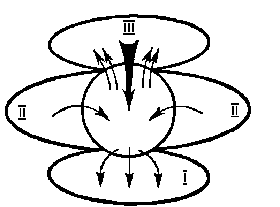
Fig. 1. The scheme of correlation of consciousness and unconscious processes of different classes
Let's summarize all the above in the last two lectures. At the time Freud has compared human consciousness with an iceberg, which is nine-tenths submerged in the sea of the unconscious, You know that under the unconscious Freud meant repressed desires, inclinations, experiences.
The whole topic of "Unconscious processes" leads to the conclusion that if consciousness is surrounded by the "waters" of the unconscious, the composition of the "water" is much more diverse. In fact, let's try to represent human consciousness in the form of Islands, immersed in a sea of unconscious processes (Fig.1).
At the bottom you should place the unconscious mechanisms of conscious actions (I). It is a technical artist, or "unskilled workers", of consciousness. Many of them are formed by the transfer of the functions of consciousness on unconscious levels.
Along with the processes of consciousness can be placed the unconscious driving force of conscious action (II). They have the same rank, and aware the driving force, only possess other qualities: they are forced out of consciousness, emotionally charged and from time to time erupt into the consciousness in a special symbolic form.
Finally, the process of "nasosnaya" (III). They are deployed in the form of consciousness, a long and tense. The result is a integral result, which is returned to consciousness in the form of new creative ideas, new attitude, or feelings, new attitudes, changing the further course of consciousness.
Author: Gippenreiter Y. B.
Source: psy-practice.com/publications/psikhicheskoe-zdorove/neosoznavaemye-protsessy/
(1) unconscious mechanisms of conscious actions;
(2) unconscious driving force of conscious action;
(3) "nadcisnienie" processes.
In the first class – unconscious mechanisms of conscious actions – are, in turn, three different subclasses:
a) unconscious automatism;
b) the phenomenon of unconscious installation;
C) the unconscious maintenance conscious action.

Let's consider each of these subclasses.
Under unconscious automatism mean are usually actions or acts that are committed "by themselves", without consciousness. Sometimes talking about the "mechanical work", the work in which "the head is left free." "Free head" and means the absence of conscious control.
Analysis of the automatic processes that detect their double origin. Some of these processes are never realized, others passed through the mind and no longer be recognized.
First make a group of primary automatisms, and the second group of secondary automatism. The first is called otherwise automatic action, the second automated actions, or skills.
In the group of automatic actions include either congenital acts, or those that are formed very early, often within the first year of a child's life. Examples: sucking movements, blinking, grasping objects, walking, convergence of the eyes, and many others.
Group of automated actions, or skills, especially extensive and interesting. Due to the formation of a skill is achieved a twofold effect: first, the action starts to be carried out quickly and accurately; second, as already mentioned, there is a release of consciousness that can be directed to the development of more complex actions. This process is fundamental to the life of every individual. Do not be an exaggeration to say that it underlies the development of all our skills, knowledge and abilities.
Let's consider an example. Take learning to play the piano. If you have gone through this process or watched it happen, then you know that it all starts with the development of elementary acts. First you need to learn to sit correctly, put in correct position of legs, arms, fingers on the keyboard.
Then practiced separately strikes each finger, the rise and fall of a brush, etc. On this most elementary basis elements are built proper piano technique: a beginner pianist learns to "conduct" a melody, to take the chords, playing staccato and Legato... And this is just the basis which is necessary in order to sooner or later go on to expressive playing, i.e. to the problems of artistic performance.

Thus, by advancing from simple actions to complex, thanks to the transfer on the unconscious levels of action already mastered, a person acquires skill. And in the end, great pianists reach this level, when, according to Heine, "the piano disappears, and we discover one music".
Why performed by master pianists remains "one music"? Because they mastered piano skills.
Speaking about the release of the action of conscious control, of course, do not think that this release completely, i.e. that the person doesn't know what he's doing. This is not so. Control, of course, remains, but it is as interesting.
The field of consciousness, as you already know, is not uniform: it has the focus, the periphery and, finally, the boundary beyond which begins the region of the unconscious. And this mixed picture of consciousness as if overlaid on a hierarchical system of complex actions. With the high floor system is the most recent and most complex components of the action – is in focus of consciousness; the floors fall on the periphery of consciousness; finally, the cheapest and the exhaust components beyond the border of consciousness.
I must say that the attitude of the various components of the action to the consciousness is unstable. In the field of consciousness is a constant change of content: presented in it is one or the other "layer" of the hierarchical system of acts constituting the action.
Movement in one direction, repeat is caring a learned component from the focus of consciousness to the periphery and from the periphery of its boundary, in the region of the unconscious. Movement in the opposite direction means the return of some of the components of the skill in consciousness. Usually it happens in case of difficulties or errors, fatigue, emotional stress. This return to consciousness may be the result of arbitrary intentions. Property of any of the component skill to once again become conscious is very important because it provides the flexibility of skill, the possibility of additional improvement or alteration.
Incidentally, this property skills differ from automatic actions. Primary automatisms is not sufficiently understood and not amenable to realization. Moreover, attempts to realize them usually upsets the action.
This last fact is reflected in the well-known parable of the centipede. The centipede asked, "How do you know which of your forty foot need now to make a move?". Centipede thought and are unable to move seats!
<...> Ask yourself whether there are automatic processes in the mental sphere? Of course. There are so many that even hard to choose some simple example.
Best of all, perhaps, to turn to mathematics. It was there for us the most obvious process of sequential layering of increasingly complex actions, skills or knowledge for automated the previous layers. The basic actions at the unconscious level is accompanied by a snapshot of "discretion" that initially demanded the expanded thinking process.
Consider the following algebraic example:

What is this expression? In short, the answer is the unit. So? So. Now let's see what the decision was based. It was based on a direct "vision" of what, for example, in the numerator there is an incomplete square of the sum and difference of squares and the denominator is the difference of cubes; on the knowledge of their decomposition; instant-use rules reduce the same factors in the numerator and denominator; to the knowledge of what 1 is and 12 and 13, etc. All these "visions", "rules", "knowledge" – the automated mental action, the path which consisted of many steps we have done since learning in the first grade.
This concludes the introduction with the first subclass of the unconscious mechanisms and move on to the second – phenomena of unconscious installation.
The concept of "installation" took in psychology a very important place, probably because of the phenomenon of installation permeate almost all spheres of human mental life.
In Soviet psychology there is a whole in the direction of the Georgian school of psychology that develops problem setup in a very large scale. Georgian psychologists are direct disciples and followers of the outstanding Soviet psychologist D. N. Uznadze (1886 – 1950), who created the theory of the installation and organized the forces of a large team.
The theory proper installation I with you will not disassemble: this is a large and complex topic. Limited acquaintance with the phenomena of unconscious installation.
First of all, what is installation. By definition, it's the willingness of an organism or entity to commit some action or response in a certain direction.
Notice that we are talking about readiness for the upcoming action. If the skill relates to the implementation period of the action, the setting to the period before the results.
Facts which can demonstrate the readiness, or pre-adjustment of an organism to action, extremely a lot and they are very diverse. As I said, they belong to different spheres of the psychic life of the individual.
For example, a child before one year of age, trying to take the subject, adjusting the hand under its form: if it's a small thing, it brings together and extends the fingers, if it is a round object, he rounds up and separates the fingers, etc. Such adjustment of the posture of the hands illustrate the engine installation.
A Sprinter is ready to leap is too motor installation.
If you sit in a dark room and wait in fear of something threatening, sometimes really start to hear footsteps or suspicious noises. The proverb "fear has big eyes" reflects the phenomenon of perceptual installation.
When you are given any math, expressed in trigonometrical symbols, then you have created a setting to solve it with formulas of trigonometry, although sometimes this decision boils down to a simple algebraic transformation. This is an example of a mental setup.
The state of preparedness, or set up, has a very important functional role. The subject is prepared for a specific action, has the ability to implement it quickly and accurately, i.e. more efficiently.
But sometimes the mechanisms of the installation enter a person into the confusion (example of unfounded fear). Let me give you another example, this time borrowing it from the Chinese ancient literary monument.
"Lost one axe. He thought of the son of his neighbor and began to watch him closely: walks like a stolen ax, looks like a stolen axe, he says, as the stolen axe. Word, every gesture, every move give him as a thief.
But soon the man began to dig up the soil in the valley, and found his ax. The next day looked at the son of a neighbor: neither gesture nor movement doesn't look like a thief" (Atheists, materialists, dialectics of ancient China. M., 1967, p.271).
It "installation errors" that appear in erroneous actions, perceptions or evaluations are among the most expressive of its manifestations , and early attracted the attention of psychologists.
I must say that not every setting neosoznanna. You deliberately wait for the last – and indeed to see the terrible, it is possible consciously to suspect a person of stealing an axe – and really see that he goes, "how stole the axe." But the most interesting are the manifestations of what unconscious installation. They began experimental and theoretical studies at school D. N. Uznadze (Uznadze D. N. Psychological research. M., 1966) .
The main experiments, which was the starting point for the further development of the concept of D. N. Uznadze, were as follows. The subject is given into the hands of two balls of different size and were asked to rate which hand the ball is bigger. The larger the ball, suppose, was given in the left hand, less in the right.
The subject correctly estimated the volumes of balls, and the trial repeated again in his left hand gave a larger ball, and the right is smaller and the subject is again correctly estimated the volumes. Again repeated the test, and so fifteen times in a row (Repetition samples served the purpose of strengthening, or fixing, setting, respectively, the described experiments are called experiments with a fixed setting).
Finally, in the next, the sixteenth, the sample suddenly, the subject was given two of the same ball with the same instruction: "compare their volumes." And now it turns out that the subject in this last control sample was evaluated wrongly balls: he took it again as a different volume.
Fixed up install that in your left hand will be given more of the ball, determined, or directed, perceptual process: the subjects generally said that the left hand ball less. However, sometimes the answers were the same as in the installation samples, i.e., that the left hand ball more. Errors of the first type was called contrast illusions installation errors of the second type – assimilative illusions install.
D. N. Uznadze and his staff have studied in detail the conditions of occurrence of illusions of each type, but I'm not on them now to stop. The important thing is to make sure that the installation in this case was really unconscious.
Directly it's not obvious. Moreover, we can assume that in the preparatory trial, the subjects were quite aware that the same type follow the presentation, and began deliberately to wait for the same samples once again.
The assumption is absolutely true, and in order to test it, D. N. Uznadze conducting a control experiment with hypnosis.
Subject euthanized in the state of hypnosis conduct pre-installation tests. The subject then awakens, but before he is led to believe that he'll remember nothing. After awakening, he is given only one test, test. And here it turns out that it the subject gives the wrong answer, although he does not know that before him many times was presented with balls of different sizes. Install he formed and now manifested the typical way.
So, the described experiments it was proved that the formation and operation of a facility study type not recognized.
D. N. Uznadze, and after him his followers, gave fundamental importance to these results. They saw in the phenomena of unconscious installation, the evidence of the existence of a special, "dosnateli", forms of the psyche. According to them, this is an early (in genetic and functional terms) the stage of development of any conscious process.
<...> There are multiple ways to refer to one or another theoretical interpretation of the phenomena of unconscious installation, but an absolute fact is that these phenomena, as discussed above, the automatism, reveal the multilayered nature of mental processes.
Moving to the third subclass of unconscious mechanisms, unconscious accompaniment of conscious actions.
Not all unconscious components of actions have the same functional load. Some of them sell for conscious actions – and they are relegated to the first division; prepare other actions – these are described in the second subclass.
Finally, there are the unconscious processes that simply accompany the action, and they allocated us to the third subclass. These processes a large number, and they are extremely interesting for psychology. I will give examples.
You probably had to watch as the man wielding the scissors, moves the jaws to the rhythm of these movements. What is this movement? Is it possible to attribute them to motor skills? No, because movement of the jaws do not implement the action; they also did not prepare it, they only accompany it.
Another example. When the player pool and let a ball by the pocket, he often tries to "straighten" his movement is quite useless movements of hands, body or the cue.
Students in the exams are often very much hold the pen or break the pencil when asked, for example, draw a chart, especially if they are in this graph is not very sure.
A man who looks at another who cut, for example, finger, building a sorrowful grimace, empathizing with him, and absolutely does not notice.
So, in the process group of the third subclass includes involuntary movement, tonic tension, facial expressions and pantomime, as well as a large class of vegetative reactions accompanying actions and the human condition.
Many of these processes, especially the autonomic components are a classical object of physiology. However, as I said, they are extremely important for psychology. The importance of this is determined by two circumstances.
First, we discuss the processes included in the communication between people and provide a crucial additional (along with speech) means of communication.
Secondly, they can be used as objective measures of various psychological characteristics of man – his intentions, attitudes, hidden desires, thoughts, etc. It is based on these processes in experimental psychology is intensively developing the so-called objective indicators (or physiological correlates) mental processes and States.
To illustrate both points, again give examples.
The first example is expanded to illustrate how it is possible inadvertently and neosoznanno to transmit information to another person.
We will focus on the "mysterious" phenomenon of "mind reading" through the muscular sense. You've probably heard about sessions that give some individuals the stage. The essence of their art is truly unique ability to perceive from another person's so-called ideomotor acts, i.e. the finest muscle strain and micromotion that accompany increased predstavljanje some action.
Unconscious driving force of conscious action. <...> Thus, according to Freud, the psyche is wider than consciousness. Hidden knowledge – it is also mental formations, but they are unconscious. For their awareness, however, you only need to strengthen the traces of past experiences.
Freud considers it possible to place these contents in the area immediately adjacent to the consciousness (preconscious), because they can be easily translated to consciousness.
As for the unconscious, it has quite different properties.
First of all, the content of this field is not understood, not because they are weak, as in the case of latent knowledge. No, they are strong, and their force is manifested in the fact that they influence our actions and condition. So the first distinguishing feature of unconscious representations is their effectiveness. The second feature is that they easily pass into consciousness. This is explained by two mechanisms that Freud postulates, mechanisms of repression and resistance.
According to Freud, mental life of man is determined by his inclinations, the most important of which is the sex drive (libido). It exists already in the infant, although in childhood it passes through a series of stages and forms. Because of the many social taboos, sexual experiences and related representations are displaced from consciousness and live in the unconscious. They have a large energy charge, however, consciousness is not ignored: the consciousness oppose them. However, they erupt into the conscious life of the person taking a distorted or symbolic form.
Freud identified three main forms of manifestations of the unconscious: dreams, faulty actions (forgetting things, intentions, names; clerical, reservations, etc.) and neurotic symptoms.
Neurotic symptoms were the manifestations, which started work Freud. Here is one example from his practice.
A young girl fell ill with severe neurosis after going to bed dead sister, and for a moment thought about my brother-in-law (husband's sister): "Now he is free and able to marry me". This thought was immediately pushed it as absolutely inappropriate in the circumstances, and, ill, the girl had completely forgotten the whole scene at the bedside of a sister. However, during treatment it is with great difficulty and excitement I remembered it, and then came recovery.
According to the ideas of Freud, neurotic symptoms are the traces of repressed traumatic experiences which form in the unconscious highly charged hearth and from there produce destructive work. A center should be opened and drained – and then the neurosis will lose your reason.
Please refer to the instances of the unconscious causes of action in everyday life, which in the early period of his scientific activity in a large number of collected and described by Freud (Freud. Psychopathology of everyday life // anthology of General psychology. The psychology of memory. M. 1978).
Not always (and you will see) the basis of symptoms lies a repressed sexual desire. In everyday life there are many unpleasant experiences that are not related to the sexual sphere, and, nevertheless, they are suppressed or superseded by the subject. They also constitute the affective foci that "break" in erroneous actions.
Here are some cases from observations of Z. Freud.
The first refers to the analysis of the "failure" of his own memory. Freud once argued with a friend about how much both of them are well known Villa area restaurants: two or three? A friend claimed that three, and Freud – two. He called these two, and insisted that there is no third. However, this third restaurant was still. He had the same name as the name of one of Freud's colleagues with whom he was at loggerheads.
Another example. One friend Freud passed the exam in philosophy (such as minimum candidate). He got a question about the doctrine of Epicurus. The examiner asked if he knows the later followers of Epicurus, to which mark replied: "why, Pierre Gassendi". He called this name because two days ago I heard in a cafe talking about Gassendi as a disciple of Epicurus, although he his work did not read. Satisfied the examiner asked how he knows that name, and a friend lied, and explained that specially interested in the works of this philosopher.
After this case, the name of P. Gassendi, in the words of a friend of Freud, was constantly dropped out of his memory: "apparently, the reason for my conscience, – he said – and I should know that name, and now it is constantly forgotten" (Freud. Psychopathology of everyday life // anthology of General psychology. The psychology of memory. M. 1978. p.112).
The following example applies to reservations. Freud thought that the reservations do not arise by chance: they break true (hidden) intentions and experiences of the person.
Once the Chairman of the meeting, which according to some personal reasons didn't want the meeting took place, opening it, said: "let's consider our meeting to be closed".
Here is an example erroneous actions. When Freud was a young practitioner and I went to the sick at home (and not they to him), he noticed that the front doors of some apartments, and he, instead of call, got your own key. After analyzing their experiences, he found that this happened at the door of those patients where he felt "at home" (Z. Freud. Psychopathology of everyday life // anthology of General psychology. The psychology of memory. M. 1978. p.147).
In psychoanalysis has developed a number of methods for the identification of unconscious affective complexes. Chief among them is the method of free Association technique and dream analysis. Both methods assume the active work of the psychoanalyst, namely, the interpretation of the continuously produced by the patient layers (the method of free Association) or dreams.
With the same objective used was already partially familiar associative experiment. Will tell about this method in more detail, as it is most simple.
You already know that the associative experiment the subject or patient offer to answer quickly any came to mind at the word made words. And here it turns out that after a few dozen samples to the subject's answers are beginning to emerge concerning its hidden emotions.
If you read the story of K. Capek, "the Experiment of Dr. Rous", we could get an idea of how it all happens.
Will give you a brief summary of the story. In the Czech town comes an American Professor, a psychologist, a Czech by origin. Announced that it will demonstrate their professional skills. Going public – know of the city, journalists and others. Enter the criminal who is suspected of murder. The Professor dictates his words, offering to answer that first came to mind with the word. First, the offender does not want to deal with him. But then the game "in the word" fascinated him, and he retracts. The Professor gives a first, neutral words: beer, street, dog. But gradually he begins to include words that are related to the circumstances of the crime. It is proposed the word "café", the answer is "highway", is given the word "spots", the answer is "bag" (later it was found that blood stains were wiped out by the bag); the word "hide" – the answer "bury", "shovel" – "Yama", "Yama" – "fence", etc.
In short, after a session on the recommendation of the Professor, the police go to some place near the fence, dig a hole and find hidden corpse (K. Capek Stories. M., 1981).
We have no opportunity to parse further the theory and technique of psychoanalysis, as well as his criticism. All of this requires a special course of lectures. My goal was only to introduce you to the main contribution of Freud – the discovery of the sphere of the unconscious dynamic and the description of forms of its manifestation.
Refer to the third class of unconscious processes that I conditionally designated as "nadcisnienie" processes. If you try to briefly describe them, we can say that the processes of formation of a large integrated product of conscious work, which is then "invades" in the conscious life of man and, as a rule, radically changing its course.
To understand what was going on, imagine that you are preoccupied with, which I think from day to day for a long time, amounting to weeks or even for months or years. It is a vital issue. You think on some issue, or about some person or some event that did not understand until the end and that you are somehow very touched, provoked painful reflection, hesitation or doubt.
Thinking over your problem, you sort out and analyze the different experiences and events, expressing assumptions, check them, argue with himself and with others. And then one day it all becomes clear – as if a veil falls from your eyes. Sometimes it happens unexpectedly, as if by itself, sometimes the reason turns out to be another ordinary impression, but that impression as the last drop of water that broke the camel's back.
You suddenly gain a whole new perspective on the subject, and this is not an ordinary opinion, is not one of those options which you went through earlier. It is qualitatively new; he remains in you and sometimes leads to the important turning point in your life.
Thus, what came to your mind, is really an integral product of the preceding process. However, you do not have a clear idea about the past. You only knew that what I was thinking and what was going on in any given moment or in a short period of time. The whole big process, which by all indications was in you, you are not traced.
Why similar processes should be placed outside of consciousness? Because they differ from conscious processes, at least in two important respects.
First, the subject does not know that the ultimate outcome, which will result in "nagsasariling" process. Conscious processes involve the target of the action, i.e. a clear awareness of the result, which the subject attempts. Second, unknown time when the "nagsasariling" the process is over; often it ends suddenly, unexpectedly for the subject. Conscious actions, on the contrary, assume control over the approach to the target and a rough estimate of the time when it will be achieved.
According to the phenomenological descriptions, to discuss the class of "superconscious" processes include the processes of creative thinking, the process experiences great grief or major life events, crises, feelings, personal crises, etc.
One of the first psychologists who drew special attention to these processes were V. James. He collected this account a lot of vivid descriptions that are outlined in his book "the varieties of religious experience" (W. James. The varieties of religious experience. M., 1910). As the later works on this subject (in Russian) can be called a small article of Z. Freud (Freud. Sadness and melancholy // Psychology of emotions. Texts. M., 1984), E. Lindeman (Lindeman E. Clinic of acute grief // Psychology of emotions. Texts. M., 1984), a relatively recently published book by F. E. Vasilyuk (Vasilyuk F. E. Psychology experiences. M., 1984).
Lead two major examples that deal W. James. The first example borrows from James L. N. Tolstoy. "I told S., – writes L. N. Thick, smart and honest man, he has ceased to believe. Years the 26, once on the bed during the hunt, by old, childhood adopted the habit, got up in the evening for prayer. His older brother, who accompanied him on the trip, was lying in the manger and looked at him. When S. had finished and was getting ready to lie down, his brother said to him: "And you're still doing it?" And more they said nothing to each other. And S. ceased from that day to praying and going to Church...
And not because he knew the convictions of his brother and joined them, not because that he decided something in his soul, but only because the word is spoken by the brother, was jabbing a finger at the wall, which was ready to fall of its own weight; the word was only an indication of the fact that where he thinks is the faith, the long-empty space, and that therefore the words he speaks and the crosses and bows which he puts it while standing in prayer, the essence is quite senseless actions. Conscious of their senselessness he could not continue them" (op. CIT. by W. James. The varieties of religious experience. M., 1910, p. 167).
Note that with the person on whose behalf the story is told, happened what I described in an abstract example: one day he discovered that he lost his faith; that his faith is like a wall that is not supported by anything, and it is enough to touch a finger to hurt her, in the role of "the finger" and made indifferent question brother. Thus, as it emphasizes that it is not so much a question brother, how much prior process, not osoznavaya in full by the hero of the story, prepared him for this critical turn.
Another example of James true feelings. "Within two years, says one person – I was a very hard condition from which nearly went crazy. I was passionately in love with a girl who, despite his youth, was a desperate flirt... I was burning with love for her and couldn't think of anything else. When I was alone, I called imagination, all the charm of her beauty, and sitting at work, lost most of the time, remembering our dates and imagining future conversations. She was pretty, cheerful, brisk. My adoration flattered her vanity. Just curious, at that time, as I sought her hand, I knew deep down that she was not created to be my wife, and that she did not agree...
And this situation in connection with jealousy to one of her fans has upset my nerves and sleep. My conscience was outraged such an unforgivable weakness on my part. And I almost came to the point of madness. However, I could not stop loving her. But most remarkable of all the strange, sudden, unexpected and irrevocable end of which it all ended. I walked in the morning after Breakfast to work, as usual, full of thoughts about her and about my miserable fate. Suddenly, as if some powerful external force possessed me, I quickly turned back and ran to my room. There I immediately began to destroy everything that was stored in memory of her: hair, notes, letters and foraminifera on the glass. From curls and letters I made a fire. Portraits of the crushed heel with a fierce and joyful ecstasy of vengeance... And I feel, just freed from a heavy burden of disease. It was the end. I haven't talked to her, wrote her, and no thoughts of love did not stir in me a vision of her. <...> In this happy morning I took back my soul and never fall into this trap" (W. James. The varieties of religious experience. M., 1910, p. 169).
V. James, commenting on this case, emphasizes the words "as if some powerful external force has seized me." In his opinion, this "force" is the result of some "unconscious" process that go along with conscious experiences of a young man. V. James could not have foreseen that the term "unconscious" will get as a result of the emergence of psychoanalysis a very special meaning. Therefore, in order to emphasize a very special type first described the processes I used another term – "nadcisnienie". It seems to me, adequately reflects their main feature: these processes occur on consciousness in the sense that their content and temporal scales larger than what can hold consciousness; passing through the minds of some of its sections, as a whole they are outside it.

Fig. 1. The scheme of correlation of consciousness and unconscious processes of different classes
Let's summarize all the above in the last two lectures. At the time Freud has compared human consciousness with an iceberg, which is nine-tenths submerged in the sea of the unconscious, You know that under the unconscious Freud meant repressed desires, inclinations, experiences.
The whole topic of "Unconscious processes" leads to the conclusion that if consciousness is surrounded by the "waters" of the unconscious, the composition of the "water" is much more diverse. In fact, let's try to represent human consciousness in the form of Islands, immersed in a sea of unconscious processes (Fig.1).
At the bottom you should place the unconscious mechanisms of conscious actions (I). It is a technical artist, or "unskilled workers", of consciousness. Many of them are formed by the transfer of the functions of consciousness on unconscious levels.
Along with the processes of consciousness can be placed the unconscious driving force of conscious action (II). They have the same rank, and aware the driving force, only possess other qualities: they are forced out of consciousness, emotionally charged and from time to time erupt into the consciousness in a special symbolic form.
Finally, the process of "nasosnaya" (III). They are deployed in the form of consciousness, a long and tense. The result is a integral result, which is returned to consciousness in the form of new creative ideas, new attitude, or feelings, new attitudes, changing the further course of consciousness.
Author: Gippenreiter Y. B.
Source: psy-practice.com/publications/psikhicheskoe-zdorove/neosoznavaemye-protsessy/


